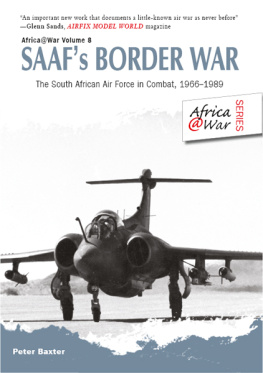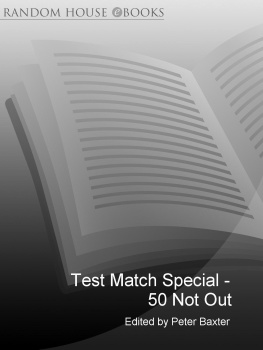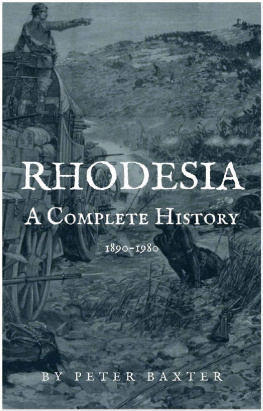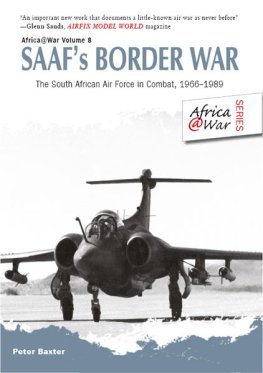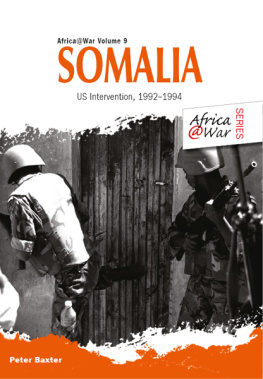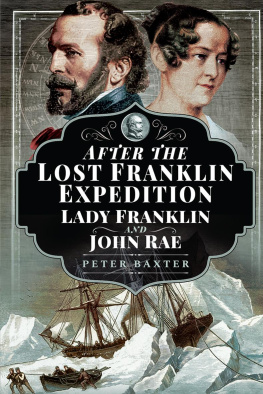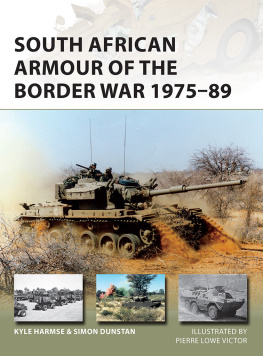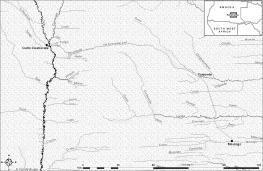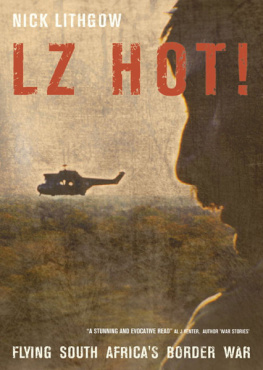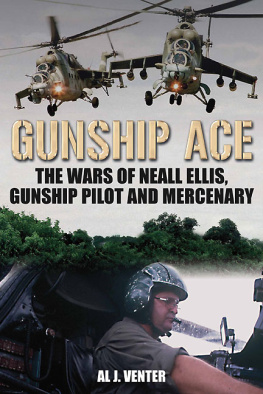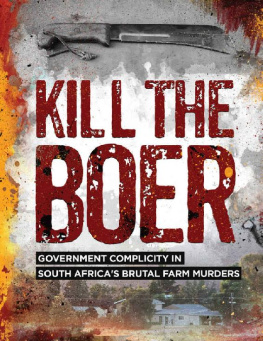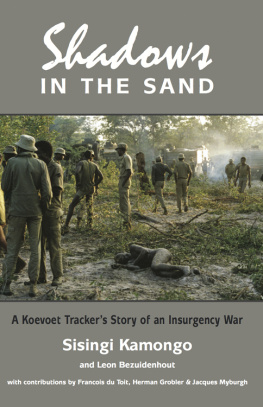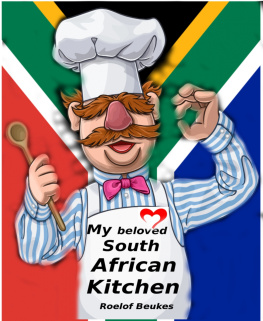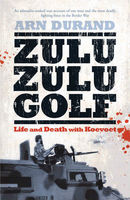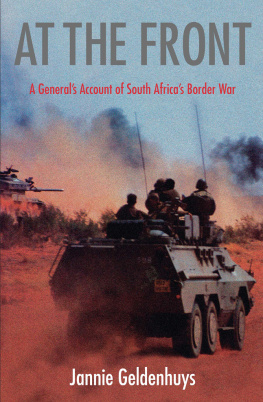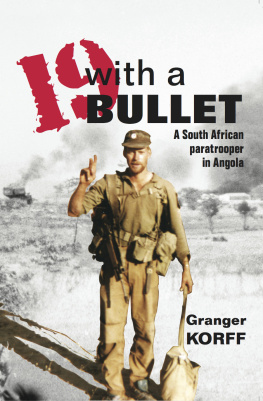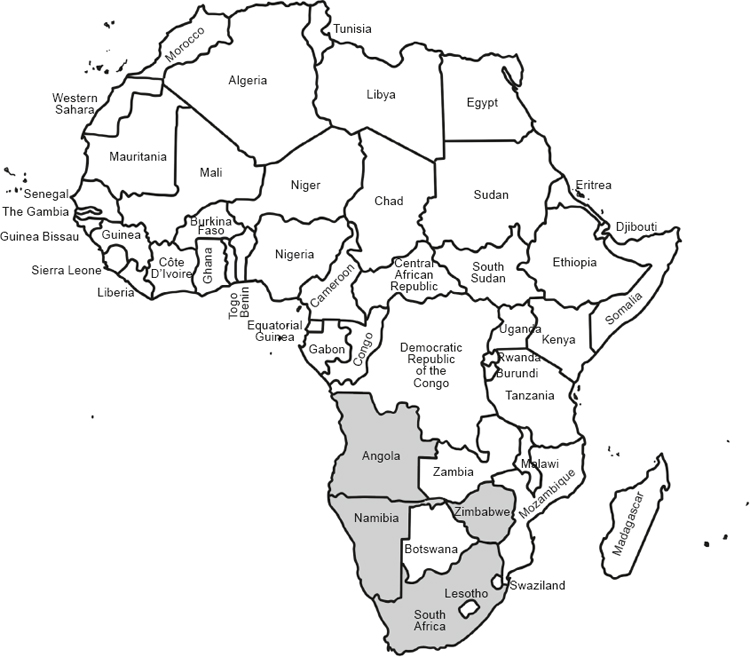Peter Baxter - SAAFs Border War: The South African Air Force in Combat 1966-89
Here you can read online Peter Baxter - SAAFs Border War: The South African Air Force in Combat 1966-89 full text of the book (entire story) in english for free. Download pdf and epub, get meaning, cover and reviews about this ebook. year: 2013, publisher: Helion and Company, genre: Politics. Description of the work, (preface) as well as reviews are available. Best literature library LitArk.com created for fans of good reading and offers a wide selection of genres:
Romance novel
Science fiction
Adventure
Detective
Science
History
Home and family
Prose
Art
Politics
Computer
Non-fiction
Religion
Business
Children
Humor
Choose a favorite category and find really read worthwhile books. Enjoy immersion in the world of imagination, feel the emotions of the characters or learn something new for yourself, make an fascinating discovery.
- Book:SAAFs Border War: The South African Air Force in Combat 1966-89
- Author:
- Publisher:Helion and Company
- Genre:
- Year:2013
- Rating:3 / 5
- Favourites:Add to favourites
- Your mark:
SAAFs Border War: The South African Air Force in Combat 1966-89: summary, description and annotation
We offer to read an annotation, description, summary or preface (depends on what the author of the book "SAAFs Border War: The South African Air Force in Combat 1966-89" wrote himself). If you haven't found the necessary information about the book — write in the comments, we will try to find it.
Set against the backdrop of the Cold War, the SAAF was effectively South Africas first line of defense against Soviet expansionism in southern Africa. That the Soviets, through their surrogates-the Cuban military, Angolas FAPLA and Namibias SWAPO-sought a communist regime in South Africa is indisputable, as too was the SAAFs skill, quality, determination and capability to defeat the best Soviet air defenses of the time. This account covers all the major operations that the SAAF was involved in, from Operation Blouwildebees, the opening salvo of the conflict at Omgulumbashe, South West Africa in 1966 to the final curtain, Operation Merlyn, the so-called April Fools Day war of 1989 when the SAAF and Koevoet, almost alone, frustrated SWAPOs last throw of the dice with its illegal invasion of South West Africa.
In this account, highlighting such operations as Reindeer, Bootlace/Uric, Sceptic, Protea, Daisy, Askari, Moduler, Hooper and Packer, among many, as well as the ongoing methodological operations like Lunar, Maanskyn, Donkermaan and Butterfly, Baxter examines and brings to life the squadrons and aviators that fought in both counterinsurgency and conventional warfare roles.
Besides an extensive selection of rare photographs, the book features a comprehensive section on camouflage and markings and 6 pages of color aircraft profiles and insignia by noted SAAF authority William Marshall, making this title especially useful for modelers.
Peter Baxter is an author, amateur historian and African field, mountain and heritage travel guide. Born in Kenya and educated in Zimbabwe, he has lived and travelled over much of southern and central Africa. He has guided in all the major mountain ranges south of the equator, helping develop the concept of sustainable travel, and the touring of battlefield and heritage sites in East Africa. Peter lives in Oregon, USA, working on the marketing of African heritage travel as well as a variety of book projects. His interests include British Imperial history in Africa and the East Africa campaign of the First World War in particular. His first book was Rhodesia: Last Outpost of the British Empire; he has written several books in the Africa@War series, including France in Centrafrique, Selous Scouts, Mau Mau and SAAFs Border War.
REVIEWS
Each of the books in this series is a well-documented and researched synopsis of the events that they are focused upon. They layouts and presentation are logical and of a very high quality ... As an introduction to this field of operation, this series is outstanding. A definite asset for those wishing to improve their knowledge and understanding of the development of successful, multi-faceted doctrine in the fight against insurgent/assymetric war.
Major Chris Buckham, Royal Canadian Air Force Journal
I thoroughly enjoyed this terrific tome. Its wonderfully researched. Its abundantly illustrated. And its a superb supplement to any library of Cold War history and African insurgencies. Rabidly recommended! David L. Veres, Cybermodeler website
This title will appeal to historians and modellers alike, particularly as there has been little written about these operations, and indeed about the activities of the SAAF in general, in the past. ModelArt Australia
Peter Baxter: author's other books
Who wrote SAAFs Border War: The South African Air Force in Combat 1966-89? Find out the surname, the name of the author of the book and a list of all author's works by series.

